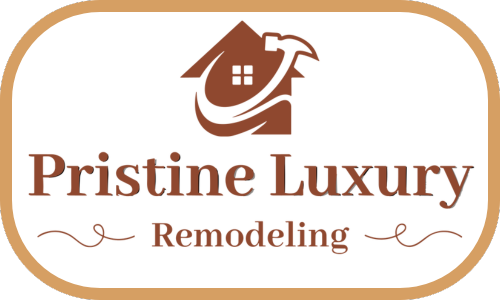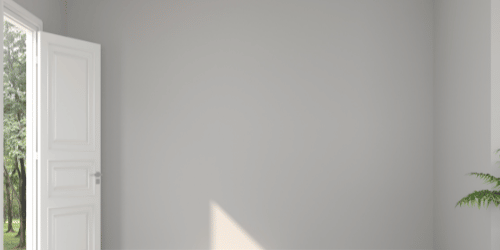When renovating or remodeling a space, wall removal can dramatically transform the layout and functionality of a room. However, this process often leaves behind exposed surfaces that require attention. In this blog post, we’ll explore essential techniques for repairing and finishing these surfaces to achieve a polished and seamless result.
Properly repairing and finishing exposed surfaces after wall removal is crucial for maintaining structural integrity, aesthetics, and safety Wall removal.
Assessing the Damage Wall Removal
Evaluating Structural Impact
Inspect the exposed surfaces for any structural damage caused by the wall removal. Look for cracks, unevenness, or compromised load-bearing elements. If you notice any issues, consult a structural engineer to ensure safety. Their expertise can help identify potential problems and recommend appropriate solutions. Addressing structural concerns promptly ensures the integrity and stability of your home, providing peace of mind during and after your remodeling project.
Identifying Surface Types
Different surfaces like drywall, plaster, and brick require specific repair techniques. Understanding the material you’re working with helps you choose the right approach. For drywall, use joint compound and sanding to create a smooth finish. For plaster, apply a patching plaster and feather it out to blend with the surrounding area. For brick, use mortar to fill gaps and ensure a solid repair. Tailoring your repair methods to the specific surface ensures a smooth and lasting finish, maintaining both the integrity and appearance of your remodeled space. Properly addressing each material’s unique needs helps avoid future issues and ensures a high-quality result.
Addressing Electrical and Plumbing
Check for exposed wires, pipes, or ducts. Safely reroute or conceal them as necessary to maintain functionality and safety. Use proper techniques for electrical wiring, ensuring all connections are secure and comply with building codes. For pipes, make sure they are properly insulated and supported. Ducts should be rerouted to maintain airflow and efficiency. Addressing these elements carefully ensures that your remodel not only looks great but also functions safely and effectively, avoiding future issues and ensuring a high-quality result.
Repair Techniques Wall Removal
Patching Drywall
Fill holes and gaps with joint compound, applying it carefully to ensure all imperfections are covered. Once the compound dries, sand the area smoothly, feathering the edges to create a seamless transition with the existing wall. This step is crucial for a flawless appearance. Prime the patched surface before painting, as this helps the paint adhere better and ensures an even, professional-looking finish. Taking the time to properly prepare and prime the surface results in a high-quality, durable outcome that enhances the overall look and feel of your remodeled space.
Fixing Plaster Wall removal
Reapply plaster to damaged areas, ensuring the mixture is evenly spread. Use a trowel to create a seamless surface, carefully smoothing out any bumps or ridges. Once the plaster is dry, sand the area to achieve a smooth finish, making sure it blends with the surrounding wall. Prime the plastered surface before painting to ensure the paint adheres properly and provides a uniform color. This meticulous process ensures a flawless, professional-looking result, enhancing the aesthetic and structural integrity of your space.
Brick and Masonry Repair
Replace missing bricks or mortar to restore the structural integrity of the wall, ensuring that new materials match the existing ones in color and texture. Clean the surface thoroughly to remove dirt, debris, and any old sealants, preparing it for a fresh application. Once the surface is clean and dry, apply a high-quality sealant to protect the brickwork from moisture and environmental damage, prolonging its lifespan. For an added touch of elegance, consider decorative finishes like whitewashing or limewashing, which can impart a rustic and charming look to the bricks while allowing the natural texture to shine through. This comprehensive approach not only maintains the wall’s durability and function but also significantly enhances its visual appeal, making it a standout feature in any space.
Finishing Options
Texture Matching
Blend the repaired area with the existing texture to ensure a seamless look. Use techniques such as stippling, knockdown, or orange peel to match the texture of the surrounding surface. Stippling involves applying a textured pattern with a brush or sponge, while knockdown uses a drywall knife to flatten the texture slightly. Orange peel, named for its resemblance to the citrus fruit’s surface wall removal, is created with a sprayer to achieve a fine, dimpled effect. Carefully applying these techniques will help integrate the repair seamlessly with the rest of the wall, ensuring a smooth and cohesive finish.
Paint and Color Matching
Choose the right paint color and finish to match your desired look and complement the existing decor. Opt for a finish that suits the room’s function—such as matte for low-traffic areas or semi-gloss for high-traffic or moisture-prone areas. Ensure consistent coverage across the entire surface by applying paint evenly, using the same technique and tools throughout wall removal. This approach will help achieve a uniform appearance, avoiding streaks or uneven patches, and ensure that the final result looks polished and professionally done.
Trim and Molding Installation
Install baseboards, crown molding, or other trim to conceal edges and create a finished look. These elements not only cover any imperfections where the wall meets the floor or ceiling but also add architectural detail and elegance to the room. Once the trim is installed, paint or stain it to match the room’s decor, ensuring a cohesive and polished appearance wall removal. Choose a color or finish that complements the wall paint and enhances the overall aesthetic of the space. Properly finished trim can significantly elevate the room’s visual appeal and complete the remodeling project with a refined touch.
Surface Protection
Sealants and Coatings
Apply sealants to protect exposed surfaces from moisture, dust, and stains, ensuring long-lasting durability and maintaining the integrity of your finishes. Sealants create a protective barrier that helps to prevent damage and extends the life of your surfaces. Clear coatings can provide a glossy finish, enhancing the surface’s shine and highlighting its texture, which adds a polished and vibrant look to the space. On the other hand, matte sealants offer a more understated, elegant finish that helps to reduce glare and create a subtle, sophisticated appearance. By carefully selecting the appropriate sealant and finish, you can effectively preserve the beauty and functionality of your surfaces, contributing to a well-maintained and visually appealing environment.
Wallpaper and Wall Decals
Use wallpaper or wall decals to cover large exposed areas and quickly enhance the look of your walls. Wallpaper offers a range of designs and can effectively hide imperfections, while wall decals provide an easy and flexible way to add patterns or artwork. Opt for removable options if you prefer flexibility, allowing you to update or change the design in the future without permanent commitment wall removal. This includes texture matching, selecting the right paint wall removal, and installing trim to seamlessly blend the repaired areas with the existing surfaces. Furthermore, applying sealants, wallpaper, and artwork can enhance the finished result, providing both visual appeal and protection against future wear and tear. This approach not only improves the aesthetic appeal of the space but also offers convenience and adaptability as your design preferences evolve.
Art and Decor
Hang artwork, mirrors, or decorative panels to strategically distract from imperfections and elevate the overall appearance of the room. Choose pieces that align with the room’s style and color scheme to ensure a harmonious and cohesive look. Artwork can infuse personality and act as focal points, while mirrors can reflect light and create a sense of spaciousness. Decorative panels can introduce texture and visual interest, adding depth to your decor. By thoughtfully selecting and arranging these elements, you can effectively cover minor flaws and enhance the room’s aesthetic, creating a well-designed and inviting space that draws attention to its features rather than its imperfections.
Common Questions
Q1 How long should I wait before painting after repairs?
A1 Allow at least 24 hours for joint compound or plaster to dry completely before painting.
Q2 Can I DIY these repairs, or should I hire a professional?
A2 Simple repairs (like patching drywall) can be DIY, but consult a pro for more complex tasks.
Q3 What if I want an exposed brick look?
A3 Consider leaving some areas exposed and enhancing the brick’s natural character.
The Impact of Proper Finishing
Finishing exposed surfaces not only improves aesthetics but also prevents moisture infiltration, enhances insulation, and contributes to overall comfort.
Seeking Expert Advice
For major repairs or if you’re unsure, consult a remodeling professional. They can guide you through the process and ensure a successful outcome.
Conclusion Wall Removal
Repairing and finishing exposed surfaces is a critical component of any remodeling project, as it plays a vital role in ensuring both structural integrity and aesthetic appeal. The process begins with a thorough assessment of the damage, where it is important to evaluate the structural impact and identify the type of surface that needs attention, always prioritizing safety throughout. Once the damage is assessed, choose the appropriate repair technique based on the material involved—whether it involves patching drywall, fixing plaster, or addressing issues with brickwork. Each method should be carefully selected to match the specific requirements of the surface. After completing the repairs, the finishing options are key to achieving a polished and cohesive look.
Visit us at Pristine Luxury Remodeling
For more information and personalized guidance visit us at Pristine Luxury Remodeling, We specialize in providing exceptional remodeling services that elevate your space into a masterpiece of luxury.







